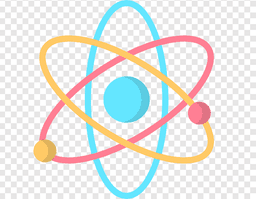The company's plan to get closer to the Earth's core is to
combine traditional drilling methods with a megawatt-power flashlight inspired
by the technology that could one day make nuclear fusion energy a reality.
Geothermal energy has been relegated to the background of
renewable energy sources. With solar and wind power increasingly dominating the
green energy industry, attempts to harness the immense pool of heat beneath our
feet are lagging.
It's not difficult to see why. Despite the fact that
geothermal energy is a great source of pure, uninterruptible, endless energy,
there are only a few areas where hot rocks appropriate for geothermal energy
extraction are near to the surface.
Quaise wants to change that by using technology that allows
us to bake holes in the crust to record depths.
To yet, our greatest efforts to gnaw through the planet's
skin have stalled at roughly 12.3 kilometers (7.6 miles). While the Kola
Superdeep Borehole and others like it may have hit their limits, they are
nonetheless incredible technical accomplishments.
We'd have to find a way to grind away at material squeezed
by dozens of kilometers of overhead rock, then cart it back up to the surface, if
we wanted to go any further.
Digging equipment would also have to be able to pulverize
rock at temperatures above 180 degrees Celsius (356 degrees Fahrenheit). It
would also need some imaginative thinking to turn the drill bits over such a
vast distance.
One possible solution to the aforementioned issues is to dig
less and burn more.
Quaise's method, which is based on nuclear fusion research
at the MIT Plasma Science and Fusion Center, uses millimeter-long pulses of
electromagnetic radiation to compel atoms to melt together.
By shaking electrons at high speeds under intense magnetic
fields, gyrotrons can efficiently churn out continuous beams of electromagnetic
radiation.
Quaise expects to be able to blast its way through the
toughest, hottest rock down to depths of roughly 20 kilometers (12.4 miles) in
a couple of months by linking up a megawatt-power gyrotron to the newest in
cutting equipment.
The heat of the surrounding rock can reach temperatures of
around 500 degrees Celsius at these depths, which is hot enough to turn any
liquid water pumped down there into a vapor-like supercritical state, ideal for
generating electricity.
Quaise expects to have field-deployable devices delivering
proof-of-concept operations within the next two years, thanks to its seed and
venture funds. If all goes according to plan, the system might be operational
and producing electricity by 2026.
By 2028, the business wants to be able to take over outdated
coal-fired power plants and convert them to steam-powered facilities.
We're likely to have plenty of doubts about how, and
whether, it may ever succeed, because it's a technology that's both ancient and
new at the same time. Fortunately for us, Loz Blain of New Atlas has compiled a
list of questions for Quaise's CEO and co-founder, Carlos Araque, to respond
to.
Even without this technology, geothermal energy could
provide 8.3% of the world's energy, enough to power nearly 17% of the world's
population. Nearly 40 countries could rely entirely on geothermal energy right
now.
Despite this, the heat beneath our feet today provides less
than 5% of the world's power. Geothermal energy should expand at a rate of
roughly 13% per year to stay on pace for net zero emissions by 2050. Its
current growth is a little sliver of that.
Even if we don't find a means to broaden its reach, this
gives a lot of space for expansion. It remains to be seen whether firms like
Quaise can help rekindle interest in this underdog.
What is known is that the window of opportunity to reduce emissions and keep global warming to a manageable level is fast closing. Maybe it's time to delve a little deeper now that we've touched rock bottom.

